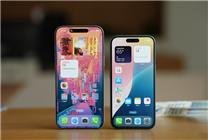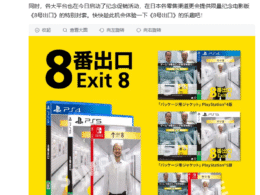Apple’s Conservative Approach to Battery and Charging Technology: A Strategic Perspective
Summary:
- Apple’s conservative stance on incorporating large-capacity batteries and high-speed charging contrasts sharply with trends in the domestic smartphone market.
- User demands vary globally, influencing Apple’s design philosophy and business strategy, particularly in regions like Europe and the U.S.
- Safety, aesthetic integrity, and cost considerations are pivotal in Apple’s decision-making process regarding battery technology.
In the rapidly evolving smartphone market, domestic brands in China are gaining momentum, particularly in developing large-capacity batteries and fast charging technologies. Recent reports indicate that the average battery capacity of smartphones in China reached a notable 5,418mAh as of May 2025, leading the global market. In stark contrast, Apple’s iPhone 16 series demonstrates a more conservative approach in both battery capacity and charging speed. This article explores the reasons behind Apple’s cautious stance in adopting these technologies.
User Demand vs. Market Orientation
User preferences for mobile technology vary significantly across regions. In China, the fast-paced lifestyle drives a higher demand for extensive smartphone usage, characterized by applications such as mobile payments, short videos, and remote work. Statistics reveal that the average smartphone usage time in China exceeds six hours per day. The increasing richness of applications, particularly those powered by artificial intelligence, has led to escalated power consumption. For instance, office workers often juggle short videos and work messages during their commutes, causing rapid battery depletion and intensifying the need for high-capacity batteries alongside rapid charging solutions.
Conversely, markets such as Europe and the United States display different user habits. In Europe, for example, the average smartphone replacement cycle extends to around 40 months, with consumers placing a premium on long-term battery durability. Although fast charging offers convenience, concerns about its potential negative impact on battery lifespan prevail. Additionally, well-established public charging infrastructure reduces the necessity for large-capacity batteries, as more charging options are readily available to users. Consequently, both Apple and Samsung have prioritized features other than large-capacity batteries and high-power fast charging in these markets.
The Trade-Off: Technology and Design Philosophy
Apple is renowned for its commitment to superior industrial design, emphasizing a meticulously crafted interior layout in its devices. To achieve a sleek and lightweight aesthetic, the company invests significant effort into optimizing the size and arrangement of internal components. For example, the presence of advanced 3D cameras and facial recognition technologies requires a specific internal footprint.
Increasing battery capacity necessitates alterations in the device’s design, potentially disrupting its overall aesthetic and tactile experience—an outcome inconsistent with Apple’s design philosophy. Instead, Apple focuses on software optimizations to enhance battery performance. The iOS system expertly manages background applications and resource allocation, thereby minimizing overall power consumption. For instance, the iPhone 16 Pro Max features a battery capacity of 4,685mAh but maintains impressive power management capabilities, allowing for video playback that lasts up to 33 hours and sustaining a full day of usage even under heavy demands.
Moreover, overseas brands share concerns regarding the safety implications associated with higher battery capacities and rapid charging solutions. Accelerated internal chemical reactions during quick charging can lead to increased heat generation, potentially jeopardizing battery life and user safety. Thus, a balanced approach is essential as technology matures, ensuring user experience and safety are not compromised as advancements in large-capacity batteries and high-speed charging are explored.
Strategic Business Considerations
As an industry leader, Apple adheres to a well-defined business strategy that leverages its brand influence and the advantages of its iOS ecosystem. This approach has fostered a dedicated user base that prioritizes a comprehensive experience, including system fluidity, software quality, and brand prestige, rather than focusing solely on battery capacity or charging speed.
The sales performance of the iPhone suggests that consumer interest in large batteries and rapid charging remains secondary to other factors. Apple has not faced significant market repercussions due to its relative hesitance in these areas, diminishing the impetus for drastic changes in strategy. Additionally, the development of high-energy-density batteries, fast charging devices, and related circuitry entails substantial R&D and production costs. Consequently, in order to maintain high profit margins, Apple is unlikely to alter its strategy when a clear value proposition for enhanced battery technology is not evident.
Conclusion
In summary, Apple’s deliberate caution towards adopting large-capacity batteries and advanced charging technologies stems from several factors, including regional user demands, design philosophy, safety considerations, and strategic business practices. While Apple leads the smartphone market with its premium offerings, its consumers value a multifaceted experience over sheer specifications. Understanding these dynamics provides valuable insight into Apple’s product development choices as they navigate the competitive landscape of mobile technology.
By prioritizing user experience, design integrity, and strategic business decisions, Apple continues to position itself uniquely within the smartphone sphere, even as competitors sprint ahead in the race for battery technology innovation.







